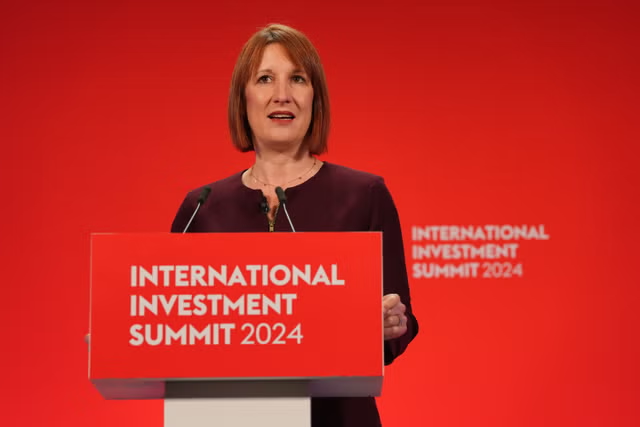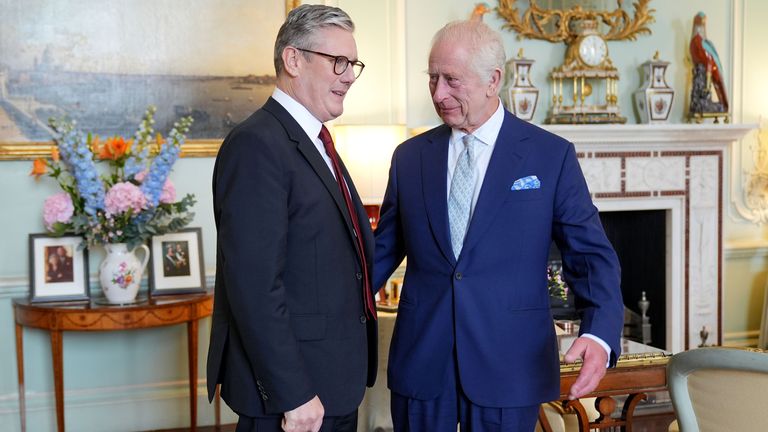The King of Australia (Charles III, in case of doubt), on his first visit as monarch, has been heckled by a senator, an extraordinary moment in the usually sedate proceedings of an official royal occasion. At the conclusion of an address to both houses of the Australian parliament, Lidia Thorpe, an Aboriginal Australian and independent senator from the state of Victoria, told His Majesty: “This is not your land. You are not my King.” The incident has revived some sensitive feelings in the country about the status of Aboriginal and other First Nation peoples and, albeit to a lesser extent, the role of the monarchy. This royal visit, through no fault of the King and Queen, seems already to have aroused some controversy...
What does Senator Thorpe want?
Formerly a Green, Thorpe split from her party last year over disagreements about the proposal for a statutory consultative “Indigenous voice to parliament”. This was to be a formal advisory body specifically for Aboriginal and Torres Strait Islander peoples to link them more closely to the remote federal parliament in Canberra. The idea was for a federal advisory body to comprise Aboriginal and Torres Strait Islander people, to represent the views of Indigenous communities. The idea was rejected by 60 per cent to 40 per cent in a referendum a year ago.
Thorpe’s view is that there should first be a treaty between the First Nation peoples and the Commonwealth of Australia before any “voice” is established, so she opposed it on “progressive” grounds. It’s fair to say Thorpe is passionate and outspoken and believes, as she shouted at the King and assembled parliamentarians: “You committed genocide against our people. Give us our land back. Give us what you stole from us – our bones, our skulls, our babies, our people.” He is “not of this land”, she added.
Does this mean the monarchy in Australia is doomed?
No. In truth, the issues Thorpe has raised have little to do with the head of state and are more between Australians. Still, and inevitably, Charles and Camilla’s first visit as King and Queen was bound to start some chatter about the future of the monarchy, and for some time there has been a widespread tacit understanding that the question would arise after Queen Elizabeth II passed away. It was interesting that no prime minister of an Australian state was able to attend the welcome ceremony for the royal couple, for example.
However, opinion remains divided, with most polls showing a modest majority to move to a republican system and sever the last vestigial links (possibly in due course changing the flag) but with about 10 to 20 per cent of undecideds – so it could be bitterly close (not a very good idea, as Brexit proves).
The prime minister since 2022, Anthony Albanese, is a firm republican and even went so far as to appoint a minister for the republic, Matt Thistlethwaite, “a minister of the crown who wants to abolish the crown”. However the loss of the Indigenous voice referendum seems to have weakened Albanese’s desire to test public opinion again, and he has other, far bigger, challenges to deal with. Thistlethwaite has been moved to other duties, with no replacement to take the republican case forward. The question is in abeyance again.
Why isn’t Australia a republic already?
Quite simply because they haven’t been able to agree on what the replacement should be – a directly elected figure, or one selected by one or other house of parliament – or what their powers should cover. That was why the monarchy was retained after the only referendum on the issue, held in 1999, by 55 to 45 per cent. The proposal put to the people would see “the Queen and governor-general being replaced by a president appointed by a two-thirds majority of the members of the Commonwealth Parliament”. The traditional Australian contempt for the political classes trumped the attraction of having an Australian head of state, which had been mostly favoured in principle since the early 1990s.
The republican cause certainly got a bit of a kickstart in the 1975 constitutional crisis, when the Australian-born governor-general, technically on behalf of the Queen in London, dismissed the then Labor prime minister Gough Whitlam. Whitlam famously declared: “Ladies and gentlemen, well may we say ‘God save the Queen’, because nothing will save the governor-general.”
Would Prince William be more popular?
Perhaps. He enjoys higher popularity ratings than King Charles (who, in turn, is more personally popular than any Australian politician). However, demographic change, with fewer Australians of “British stock” and fewer survivors of wars fought for King and empire probably continuing to erode the profile of the monarch. The national anthem was changed from “God Save the Queen” in 1984 and the 1986 Australia Acts, passed in parallel in Westminster and Canberra, removed the last theoretical bits of British power over the states’ and the Commonwealth’s constitutions.
After the death of Queen Elizabeth, there is no portrait of the monarch on any Australian banknotes, though a rather glum-looking Charles graces the Aussie coinage, sharing the space with kangaroos, duck-billed platypi and koalas. A fiercely competitive, proud but pragmatic nation, Australians are probably more bothered about the cost of living, housing, the health system, China and their sports teams than eradicating the last traces of their colonial past. The King has been saved for a little longer.
Disclaimer: The copyright of this article belongs to the original author. Reposting this article is solely for the purpose of information dissemination and does not constitute any investment advice. If there is any infringement, please contact us immediately. We will make corrections or deletions as necessary. Thank you.



